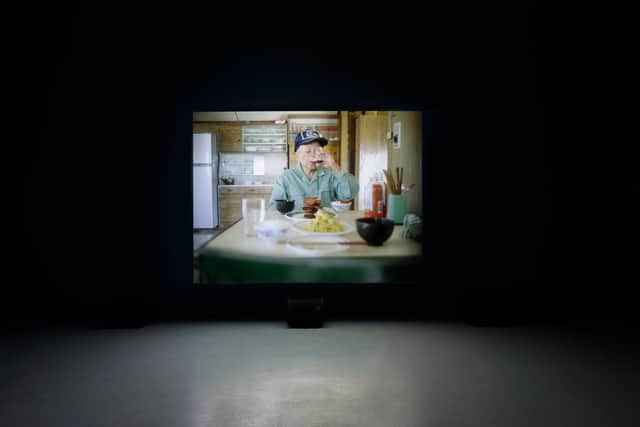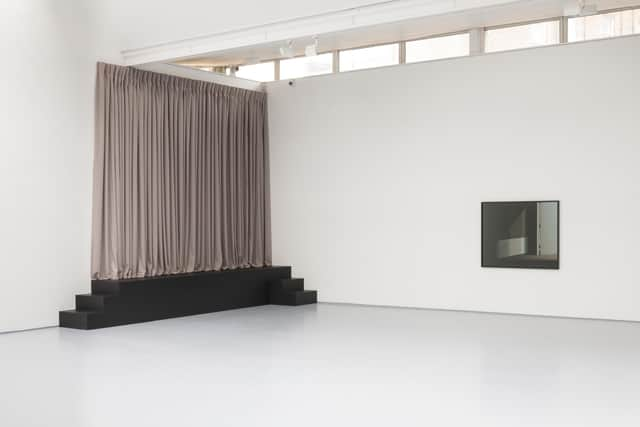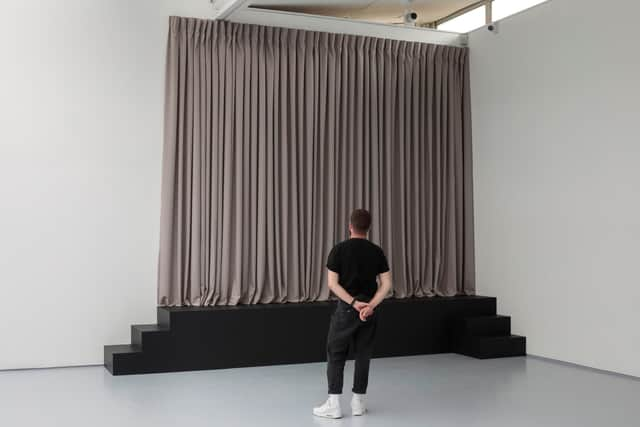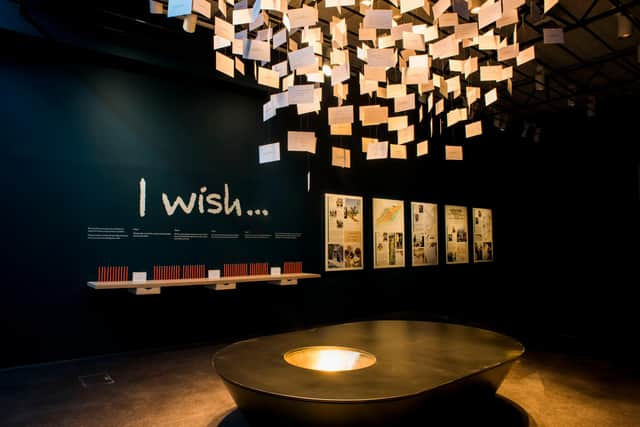Art reviews: Chikako Yamashiro | Mary McIntyre | What if…?/Scotland


Chikako Yamashiro: Chinbin Western, DCA ***
Mary McIntyre: Places We Think We Know, DCA ***
What if…?/Scotland, VY& Dundee ***


As galleries play catch-up on two years of programming, we’re beginning to see international exhibitions opening which were planned in the pre-covid era. Dundee Contemporary Arts (DCA) is one of the first out of the gates with a double bill, including the first Scottish exhibition by leading Japanese contemporary artist Chikako Yamashiro. In place of a planned visit by Yamashiro to Scotland, we have the European premiere of her new film Chinbin Western, along with two earlier works in a show guest curated by Kirsteen Macdonald.
Yamashiro’s work is rooted in Okinawa, where she grew up, a group of islands in the East China Sea illegally annexed by Japan in 1879 and brought under American rule after World War II before being returned to Japan in 1972. It was the only part of Japan to witness ground combat during the war, when the islands lost some 240,000 civilians. Its location means it is still home to a plethora of US military bases.
Advertisement
Hide AdAgainst this geopolitical background, Yamashiro’s new film centres on a controversial land reclamation project to build a US base next to a scenic coastal area, the focus of ongoing local protest. This isn’t spelled out overtly in the film, which is an episodic narrative of two family units, a couple with two small children and a young female artist who lives with her grandfather (they, in particular, are beautifully evoked).
The 35-minute film is, at times, a bewildering mash-up of genres, from opera and melodrama to kitchen sink realism with excursions into folk horror, spaghetti western and traditional Japanese theatre. The shifts are often signalled in music, from Verdi to the sound of local stringed instruments. Perhaps that’s the point: Okinawa is a patchwork of cultural influences, some more welcome than others. Any sense of an overall tone, however, is lost in the pastiche.


Yamashiro has shown little in the West, and her work is deeply connected to Japan, and Okinawa in particular. In her two other films, she seems to ask what real empathy looks like, whether it is possible to understand, truly, another person’s story. Perhaps it is inevitable that something is always lost in translation.
Meanwhile, DCA’s other gallery hosts another project which has been long in gestation, the first solo show in Scotland by Belfast-based Mary McIntyre. She is, she says, not a photographer, but her practice is built around photographs which she takes continually. When preparing for a show, she selects images and builds sculptures or architectural interventions in response, extending or interacting with what’s in the photograph.
This show is built around three images, each showing the corner of an empty room. They manage to be both rich in detail - sagging hessian wall coverings, fraying carpet, a suggestive stain - while being generic enough not to declare themselves. There’s a vague sense of familiarity, of previous use, without any specific clues. The pictures are then married with sculptural pieces using black curtains (with immediate theatrical associations) and texts taken from Edgar Reitz’s epic film series Heimat.
While the work creates a very still space, it is cinematic in its inspiration (Reitz is a major influence, as is David Lynch) and filmic in the way McIntyre brings together images, associations and – for the first time at DCA – music, adding eight modular synth tracks by Sean McBride of Martial Canterel, played at 15-minute intervals.


Advertisement
Hide AdIt’s work which is deliberately open-ended. The hope is that something in it will activate the viewer’s imagination, trigger a psychic charge of memory or association, ignite a moment when the familiar becomes unfamiliar. But what it lays out is so subtle, so reluctant to reveal itself, the danger is that it simply leaves no trace.
McIntyre is also concerned with the use of space, and it’s an interesting contrast to head down the road to the V&A for a different kind of investigation into spaces how we can reimagine them. What if…?/Scotland, created pre-pandemic, is the project commissioned by Scotland + Venice for the (cancelled) Architecture Biennale in 2020.
Advertisement
Hide Ad7N Architects worked with citizens in five Scottish locations – Wester Hailes, Paisley, Annan, Elgin and Lerwick – asking them their “what if” dreams for the future, and opening up conversations with architects and designers about ways to realise them. A further project with citizens in North-east Dundee is still ongoing. The show responds to the Biennale’s theme “How will we live together?”, chosen at a time when no one imagined the conversations which would be happening around the world about life post-covid.
The project is transformative in the way that it turns what might sound, in another context, like problems or complaints into imagined solutions. So “I wish the centre of Wester Hailes had a heart” becomes a suggestion about turning a derelict petrol station into a commuity hub. There are small, practical suggestions, like the young man in Annan offering to help local traders clean their shop fronts, and big, visionary ones, like the idea of turning Paisley’s White Cart river into a source of green and affordable energy.


While the places selected have different histories – Annan and Paisley are Victorian boom towns fallen on hard times, Elgin has a richly historic but rather neglected town centre, Wester Hailes suffers from the design failings of the 1970s – the wishes are similar: to build community, for more green space, for the revitalisation of derelict buildings and ailing high streets.
The project is illuminating in the ways it explores how architecture and design, past, present and future, can shape (for good or ill) more ephemeral things like community spirit, connections between people, our sense of ownership of where we live. While it’s true that all this is just talk – there’s no suggestion of these projects happening – it does provide the freedom of blue sky thinking around the built environment, and how we would like to see it change.
All three shows run until 21 November
A message from the Editor:
Thank you for reading this article. We're more reliant on your support than ever as the shift in consumer habits brought about by coronavirus impacts our advertisers.
If you haven't already, please consider supporting our trusted, fact-checked journalism by taking out a digital subscription at https://www.scotsman.com/subscriptions